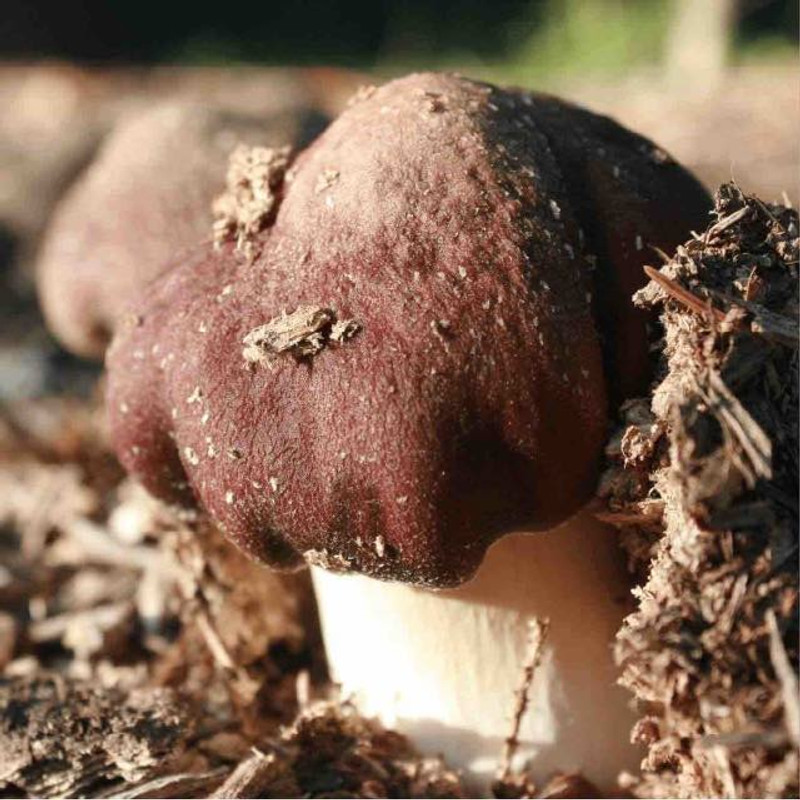When it comes to wood chip type suitability, we can generalize that soft hardwoods are best, followed by hard hardwoods, (some which benefit from a little bit of aging), and then the Conifer group: Firs and Spruce are suitable but Pines benefit from a little aging. Ultimately each species must be checked individually. Two ways to make sure your chips or sawdust is suitable for Wine Cap if they are untested is: 1. Get a mix of chips (most community recycling centers have these for free), or 2. just add straw.
We chip our own wood chips at the Field & Forest research farm and we able to chip several different varieties of wood to use for Wine Cap plots. For these plots we used a base of soaked cardboard to suppress weeds, followed by the wood chips and wine cap sawdust spawn, and then covered with a shallow layer of straw to add a layer of protection. We planted each plot in June of 2021 and observed harvests in the fall of that year. Below are the types of chips we inoculated and how they fared.

Red Oak: Moderate yield. Red oak did produce mushrooms, but it wasn't a jaw-dropping amount. However, the mushrooms that it did produce we're excellent quality (this likely has to do more with the stage of harvest than the chip itself).
Douglas Fir: This chip surprised us by not only producing Wine Cap, but by producing a nice amount of Wine Cap! Keep in mind that with all evergreen chips we recommend aging the chips for several months prior to building your bed.
Birch: Similar in yield to red oak. Nothing spectacular, but it did produce mushrooms.
Aspen: See Red Oak and Birch. Aspen was another species that did produce mushrooms, but it wasn't a jaw-dropping amount.
Cherry: Cherry chips were slightly less productive than Red Oak, Birch, and Aspen. However, the plot was also smaller than the others so we feel comfortable saying that the overall yield would have been similar had the plot sizes been equal area.
Box Elder: Box Elder was the clear winner in this study. The Wine Cap bed made with Box Elder chips not only produced the most (wagons of mushrooms!), but produced the first mushroom of the study and the last mushroom of the study.
What has yet to produce? We have yet to see fruiting out of Red Maple, Apple, and Ash chips. However, we do see good spawn run in all of the beds so we certainly are not giving up on those plots! Wine Cap can take up to a full year to show their first mushrooms depending on a variety of factors, so like most things mushroom we're dialing in our patience until June.

